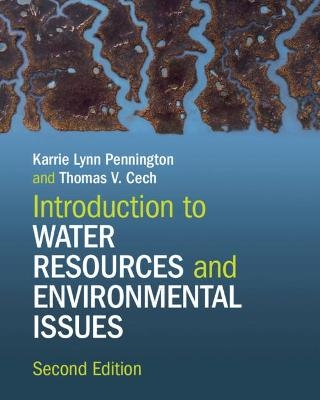
Introduction to Water Resources and Environmental Issues
Cambridge University Press (Verlag)
978-1-108-74684-7 (ISBN)
How much water does the world need to support growing human populations? What are the potential effects of climate change on the world's water resources? These questions and more are discussed in this thoroughly updated and expanded new edition. Written at the undergraduate level, this accessible textbook covers the fundamentals of water resources, water law, allocation, quality and quantity, health issues, and provides examples of potential personal actions and solutions. There is a keener focus on climate change, as many of the predictions made in the first edition have now come to pass. This new edition features improved artwork, more active learning prompts, more positive examples of beneficial changes, basic introductions to scientific approaches and a discussion of emerging contaminants and LiDAR technology. It contains strong teaching features, with new 'In Depth' and 'Think About It' sections to encourage class discussion, and homework questions to test students' understanding.
Karrie Lynn Pennington has studied the interactions of land use, water quality, and quantity for over 30 years. The last twenty-two years were with the Natural Resources Conservation Service of the US Department of Agriculture (USDA) in the Mississippi Delta where, as in many places around the world, human actions changed the natural ecosystem into farmland, providing a classic example of land-use conversion for study. She received her bachelor's degree in biology from the University of North Texas, completed her Master of Science in soils from the University of Idaho where she taught until moving to Tucson, Arizona. She taught for three more years at the University of Arizona (UA) before deciding to obtain her Ph.D. at UA. After completing her Ph.D. in soil and water science she moved to Mississippi finishing her postdoctoral work with USDA's Agricultural Research Service. She is now retired. Thomas Cech was born and raised on a farm near Clarkson, Nebraska. He graduated from Kearney State College with a Bachelor of Science degree in mathematics education, and later received a Master of Science degree in community and regional planning from the University of Nebraska, Lincoln. He was Executive Director of the Central Colorado Water Conservancy District in Greeley, taught undergraduate and graduate level water resources courses at the University of Northern Colorado and Colorado State University, and is now the Co-Director of the One World One Water (OWOW) Center at Metropolitan State University of Denver, Colorado.
1. Perspectives on water and environmental issues; 2. The water environment of early civilizations; 3. The hydrologic cycle; 4. Water quality; 5. Watershed basics; 6. Groundwater; 7. Lakes and ponds; 8. Rivers and streams; 9. Wetlands; 10. Dams and reservoirs; 11. Drinking water and wastewater treatment; 12. Water allocation laws; 13. Roles of federal, regional, state, and local water management agencies; 14. Water conflicts, solutions, and our future; Index.
| Erscheinungsdatum | 20.08.2021 |
|---|---|
| Zusatzinfo | Worked examples or Exercises |
| Verlagsort | Cambridge |
| Sprache | englisch |
| Maße | 204 x 253 mm |
| Gewicht | 1060 g |
| Themenwelt | Naturwissenschaften ► Geowissenschaften ► Hydrologie / Ozeanografie |
| Technik ► Maschinenbau | |
| Technik ► Umwelttechnik / Biotechnologie | |
| ISBN-10 | 1-108-74684-5 / 1108746845 |
| ISBN-13 | 978-1-108-74684-7 / 9781108746847 |
| Zustand | Neuware |
| Haben Sie eine Frage zum Produkt? |
aus dem Bereich


